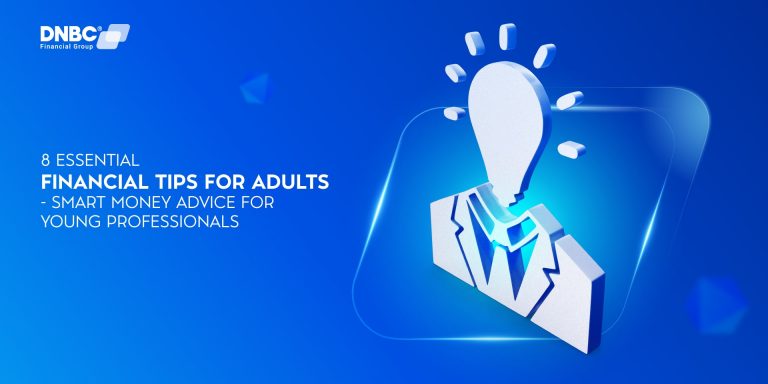BIC code is used to identify bank branches in international transactions. This code represents the information required for making international transactions.
Although BIC code can be a little confusing for new customers, it’s important for anyone who wants to send international payments.
DNBC’s experts will explain everything you need to know about BIC codes and help you to answer the question “How to find my BIC code.”
What is a bank identification code?
BIC stands for Bank Identifier Code or Bank Identification Code. It can be used interchangeably with SWIFT code. Both codes facilitate money transfers among banks.
They are required for international wires & SEPA payments. BIC code is applied for addressing messages, identifying business partners and routing business transactions.
BIC is also applied in customer and counterparty databases, compliance documents and more.
BIC was originally developed in the 1970s and applied as a standard for routing business transactions by ISO. Gradually, BIC has become an integral part in the payments and foreign exchange up to now.
![How to find my BIC code [update in 2023]? How to find my BIC code [update in 2023]?](https://d280xaotioobow.cloudfront.net/uploads/how-to-find-my-bic-code-update-in-2023-750x500-1675322648.jpeg)
How to find my BIC code [update in 2023]?
These codes consist of an 8 – 11 character number string to identify a specific bank in making an international transaction. It looks like a postcode for your bank in order that your money reaches the right destination.
BIC follows a format to identify your bank, country, location, and branch.
Bank code (4 letters): The first 4 letters are about the bank and look like abbreviated letters of the bank name.
Country code (2 letters): These 2 letters determine the country where the bank lies.
Location code (2 letters or numbers): These 2 characters identify the location of the main bank.
Branch code (3 digits): These 3 digits identify a specific branch.
Basically, there are two types of BIC: connected BICs with access to the Swift network and non-connected BICs with no access and for reference only.
When the banks proceed with international payments, they rely on the correspondent bank’s network. These correspondent banks will partner up together to transfer your money from one location to another before reaching the final destination.
On the customer’s side, it’s a simple step to make international transfers. Once you get your beneficiary SWIFT number and double-check that it’s correct, you just need to visit your local branch and request to make an international payment.
How do I find my bank identification code?
When making an international payment, you’re required to find the BIC code of the beneficiary of your international payment. If anyone is transferring money to you from abroad, they will need your BIC/SWIFT code.
It’s vital to double-check with your beneficiary that the BIC code you’ve been given is correct before making an international payment. An incorrect code can make your payment sent back, delayed, or reach the wrong account.
Searching for BIC Codes Online
It’s a good idea to use a search engine to look up BIC code. If you text the bank’s name, the country and the city it’s located in, and combine the phrase “BIC code” into a search box, you can be shown the BIC code.
Check your account or contact your bank
1. Look over your bank statement.
If you have a paper or digital bank statement in hand, it can contain the BIC code in the fine print. Look for BIC or SWIFT (interchangeable) with a string of 8 or 11 characters.
Note that BIC and SWIFT codes are created by 2 different authorities that have agreed to a single standard. It means that BIC codes and SWIFT codes are interchangeable.
2. Log into your online banking account
You can find the BIC code for your bank after logging into your account online.
3. Visit a branch or call customer service to ask for BIC code
The tellers at any branch will tell you their BIC or SWIFT code. They can look it up quickly too.
Once again, you should double-check your BIC code before making transactions.
Is it free for using BIC/SWIFT codes?
Often, most banks will require a fee to get started with international payments, so you need to prepare £40 – £50 when using a BIC code for your international payment.
When your money transfer is in progress, it can require a handling fee from the banks.
Bank transfers with BIC/SWIFT codes often deal with 1 – 3 corresponding banks. As a result, the fee can add up afterwards.
Moreover, the information on handling fees is often hidden, so it’s hard to know exactly how much you’ll be charged for your transfer.
More about DNBC Financial Group
In the Fintech industry, DNBC Financial Group has been emerging as a typical startup. It offers money transaction solutions anywhere in the world.
By setting a high standard for innovation in the money transfer platform since 2017, DNBC Financial Group has given full payment solutions to collecting payments, transferring and managing funds.
There has been a considerable number of customers all around the world. DNBC Financial Group has been considered as one of the most optimal international money transfer service providers.
DNBC Financial Group is your trusted provider in international money transfer
- Get 100% free 1-on-1 support
- 100% free account opening
- Seamless onboarding process
Or please contact DNBC
![]() Email: support@dnbcgroup.com
Email: support@dnbcgroup.com
![]() Phone Number:
Phone Number:
- +65 6572 8885 (Office)
- +1 604 227 7007 (Hotline Canada)
- +65 8442 3474 (WhatsApp)

![How to find my BIC code [update in 2023]? How to find my BIC code [update in 2023]?](https://www.dnbcgroup.com/wp-content/uploads/2023/07/how-to-find-my-bic-code-update-in-2023-1080x500-1675322650.jpeg)
![How to find my BIC code [update in 2023]? How to find my BIC code [update in 2023]?](https://www.dnbcgroup.com/wp-content/uploads/2023/07/how-to-find-my-bic-code-update-in-2023-1080x500-1675322650-768x356.jpeg)
 DNBC Team
DNBC Team






